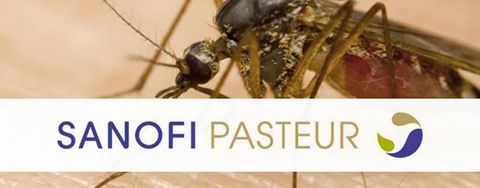Sanofi: Facing Down the World’s Deadliest Animal

Imagine the world’s deadliest animal and you’re probably thinking of a shark or a snake, but the tiny mosquito is actually far more dangerous.
At 1.6 cm long and weighing less than a teaspoon of sugar, this deadly insect causes millions of deaths each year. Their bite can transmit potentially fatal infectious diseases.
On World Mosquito Day, Sanofi takes a closer look at three mosquito-borne diseases-malaria, yellow fever and Japanese encephalitis-for which they are developing solutions and treatments in the hope of one day wiping them out.
Malaria
Malaria is the deadliest and most prevalent parasitic disease on the planet, occurring mainly in Africa. According to the World Health Organization, there were approximately 219 million cases and 435,000 deaths due to malaria in 2017, mostly among children in Africa, where one child dies from the disease every two minutes.2 Malaria also has socio-economic consequences in the affected countries that include poverty and school absenteeism.
Malaria – a public health issue in Africa
Sanofi has already provided more than 500 million treatments. However, drugs alone are not enough, which is why Sanofi supports a holistic approach to defeat malaria through education and prevention programs to help populations adapt their behavior.
Because today’s children are tomorrow’s adults, educating them is an effective means of fighting malaria. Too many people, particularly children, are still unaware of the link between a mosquito and malaria. This is why they have developed MOSKI® awareness materials to explain the key actions to take to prevent and treat malaria. Children can also play an active role in prevention campaigns designed to achieve the behavioral change needed to roll back the disease and become advocates for their families and communities.
Yellow Fever
Yellow fever is a viral hemorrhagic fever transmitted by mosquitoes. It impacts more than 900 million people in 40 countries across Africa and Latin America and poses a significant risk to three million people who travel each year in affected countries. Vaccination can offer protection against this disease.

Japanese Encephalitis
Japanese encephalitis, caused by a mosquito-borne flavivirus (a family of viruses named after the yellow fever virus that includes the West Nile and Zika viruses) accounts for most cases of viral encephalitis in Asia. With approximately 68,000 cases and up to 20,000 deaths reported each year, it is the leading cause of viral neurological infection among children in Asia. Vaccination can offer protection against this disease.

Did you know?
- Only female mosquitoes bite.
- There are more than 3,500 species of mosquitoes.
- Mosquito is Spanish for “little fly.”
- The life span of an adult mosquito ranges from 2 weeks to 6 months.














